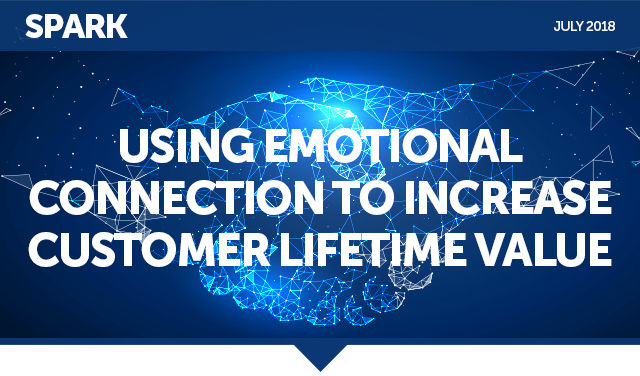Using Emotional Connection to Increase Customer Lifetime Value
- Mortgage Returns
- Jul 19, 2018
- 3 min read
Updated: Jul 14, 2021

"Business is business. It’s no place for emotion, especially when it comes to my customers." If you subscribe to that line of thinking, you’re doing yourself a major disservice. People are emotional creatures, which means emotions play a bigger role in the consumer’s decision-making process than you might think. It doesn’t matter what you’re selling: If you don’t know how to create an emotional connection with your customers, you won’t be able to hold on to them for long.

In the context of customer lifetime value (CLV) — that is, how much revenue a customer will generate for you over his or her lifetime — emotionally connected customers are 52% more valuable than just highly satisfied customers. That means a customer can be happy with an experience, but not necessarily committed to your brand for future purchases. Conversely, emotionally connected customers are more likely to make repeat purchases, trust your advice, recommend you to others, and remain loyal over the long haul.

Researchers from consumer intelligence firm Motista discovered a variety of emotional motivators that guide consumers’ buying behavior, such as the desire to succeed in life, feel a sense of freedom, or have confidence in the future. Successful brands are finding ways to pinpoint these emotional drivers and fulfill them for their customers. So, how can you do the same?

Be authentic.
Is your goal to just make a sale, or do you really care about your clients? Your customers are asking themselves this question, and they’ll walk away if they sense that you’re not genuine. Putting them first shows that you aren’t just out for a commission; you’re truly committed to helping them achieve their goals. Plus, if you’re only focused on yourself, you won’t be able to discover their emotional motivators.

Ask and listen.
If you want to find out what motivates your clients emotionally, just ask. Or better yet, just listen. Oftentimes, their motivation for wanting a certain outcome will naturally present itself as you discuss how your product or service can help them. If that’s not enough, it’s ok to ask through both casual (e.g., face-to-face conversations) and more formal means (e.g., surveys and questionnaires).

Focus on the feeling.
Once you’ve identified their emotional motivators, reframe the conversation about your service so that it’s more about the feeling instead of the transaction. For example, let’s say my client’s goal is to feel a sense of security, which is why they’re interested in buying a home. I can simply be the person who sells them a mortgage, or I can be their trusted partner in helping them achieve emotional and financial security through the path of homeownership. That kind of experience creates a deeper connection that surpasses customer satisfaction and leads to long-term loyalty.


Customer: I want to feel valued and important
How You Can Help:
Provide a solution that helps them feel unique or special, such as:
An exclusive product or perk for “elite” customers only.
Customized experiences, like:
A personality quiz that shows their best “match” for what you’re selling (e.g. home style or finishes).
A customized online portal where they can view new offerings, communicate with you, make notes, access documents, and even create a wish list.

Customer: I want to have confidence in the future
How You Can Help:
Create a narrative around what their future life could be like with the help of your services. For example:
• Building a custom home can ensure their home suits their needs today and 10 years from now as their family grows.
• The starter home they’ve outgrown is holding them back from a better school district, shorter commute, or a community with more amenities. A new home could change that!
• Partner with your preferred lender to create educational marketing that shows how owning a home is a sound financial decision that can increase overall net worth.

Customer: I want to support environmental and community causes
How You Can Help:
Show that you are committed to sustainable business practices and solutions. For instance:
Switch to e-docs, and let your clients know how many trees they helped save in a year or greenhouse gases they reduced just by going paperless.
Participate in community cleanup events in your sales area, and share your activity on social media.
Create a program where you donate a portion of each home sale back to the community, like childhood development programs or renewable energy initiatives.
While this list is by no means exhaustive, hopefully it gives you a sense of where to get started. Remember that emotional connection is important at every stage of the customer journey — from your initial contact with a prospect to how you nurture the relationship after the sale. If you want to build a loyal customer base, you have to go beyond mere customer satisfaction. Actively seeking opportunities to engage emotionally with your clients will elevate you above the competition and help you keep your customers for life.



Comments